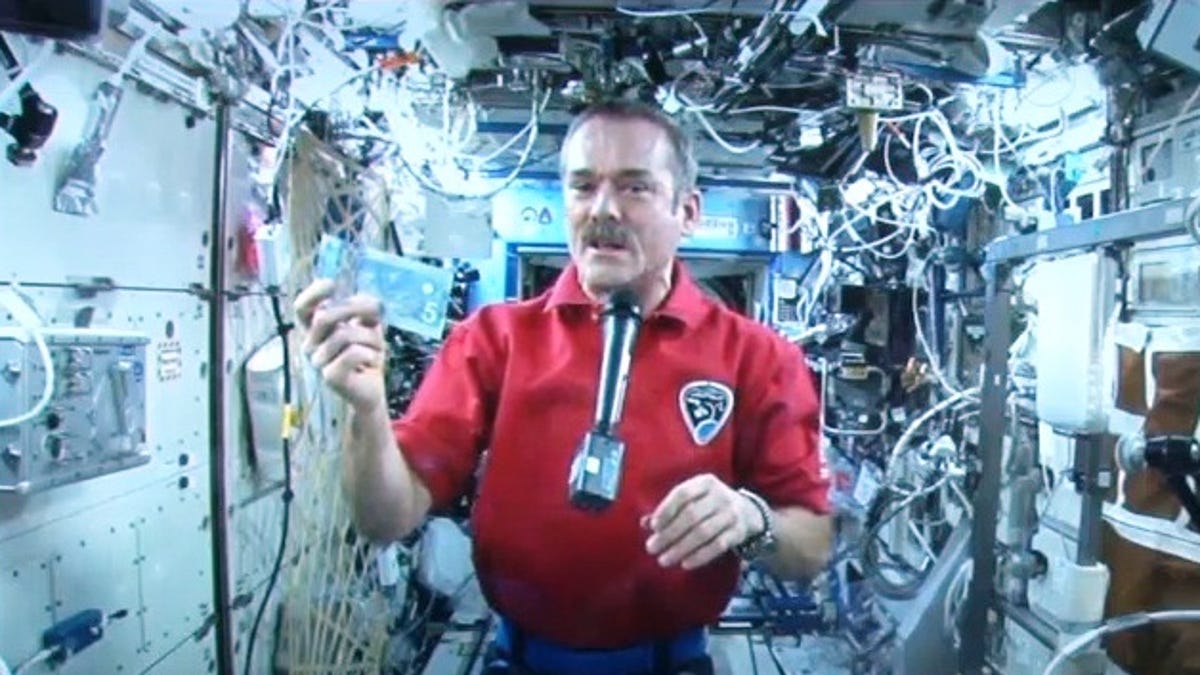Canada launches robot-themed plastic banknote from space
Aboard the International Space Station, astronaut Chris Hadfield unveils the new polymer $5 bill, which showcases ISS robots Canadarm2 and Dextre.

By far the coolest thing Canada has in space is Chris Hadfield, commander of the International Space Station. He's all over social and news media with his wacky zero-g demos, guitar playing, and amazing photos of Earth.
Today Hadfield notched another first: unveiling a banknote in space. At a Bank of Canada press conference in Ottawa, the mustachioed colonel appeared via ISS video link. He plucked the bank's latest polymer bill from a bracket on the wall, gave it a few weightless twirls, and pointed to the robots it features.
"I just want to tell you how proud I am to be able to see Canada's achievements in space highlighted on our money," Hadfield told Bank of Canada Governor Mark Carney. "To feature Canadarm2 and Dextre for the theme of the $5 note, it really marks Canada's contribution to the International Space Station Program, and especially our longtime area of expertise in robotics."
Dextre, or the Special Purpose Dextrous Manipulator, is a dual-armed external robot manipulator that attaches to Canadarm2, the 55-foot robotic boom that assists in station assembly and maintenance, captures unpiloted spacecraft, and serves as a platform for astronaut spacewalks.
Meanwhile, the bank also introduced a polymer $10 bill that honors the joining of eastern and western Canada by rail. It features Via Rail's Canadian, a passenger train that links Toronto with Vancouver, a distance of 2,775 miles. The note also shows Via's passenger rail network and an image of the Canadian Rockies.
Countries such as Australia have been using polymer banknotes for years, but Canada's polymer series is the first to sport large transparent windows with metallic features that make counterfeiting much harder.
Canada introduced the series in 2011 in a bid to further cut forgeries, launching the $100, $50, and $20 bills. The $10 and $5 banknotes complete the series.
Carney noted that counterfeiting rates were down 92 percent in 2012 from 2004. Out of every million genuine notes in circulation, only 28 are fakes, down from 470. Meanwhile, since the plastic dollars last more than twice as long as the cotton-paper bills of the past, they're cheaper to issue.
The $5 and $10 notes are due to enter circulation in November. Check out images of the plastic bucks in the gallery above.

